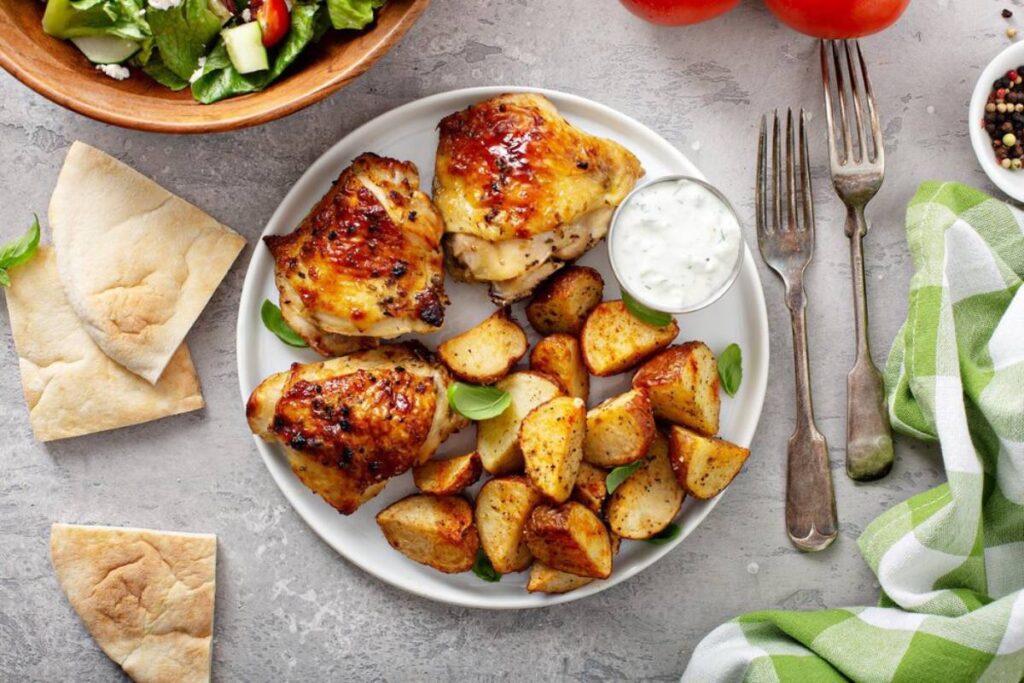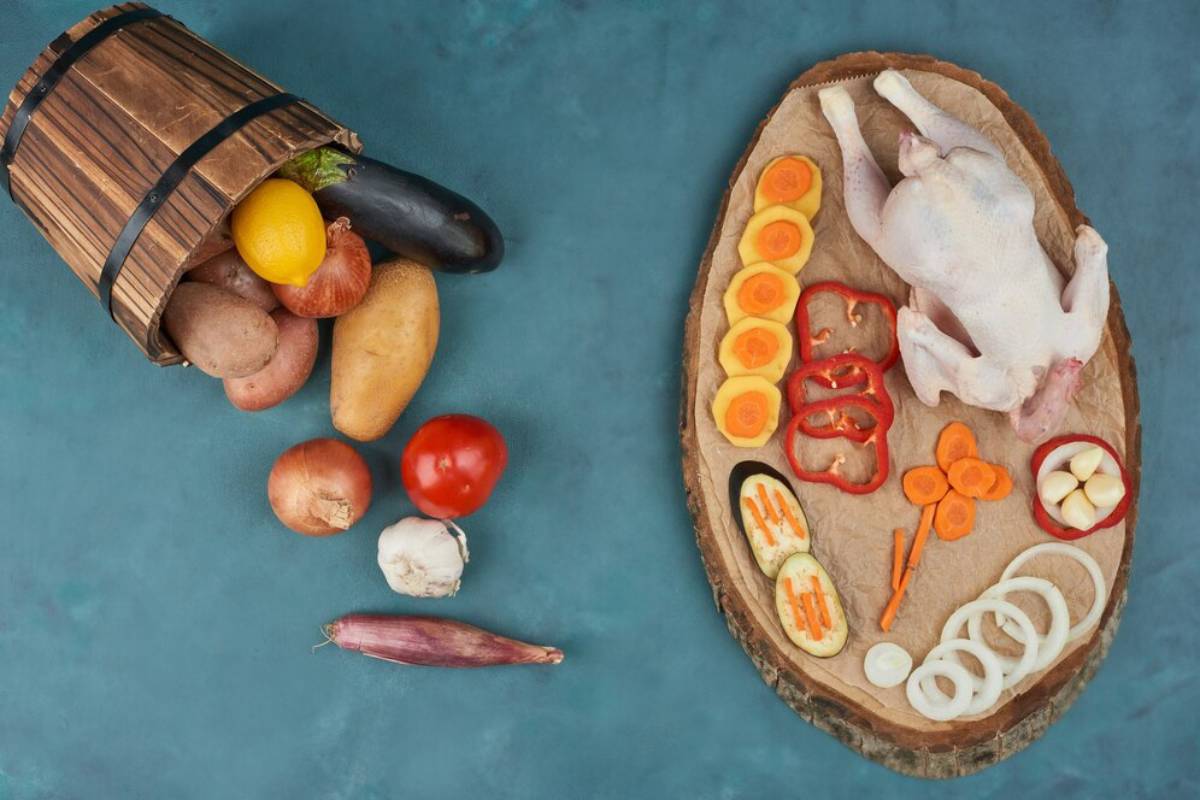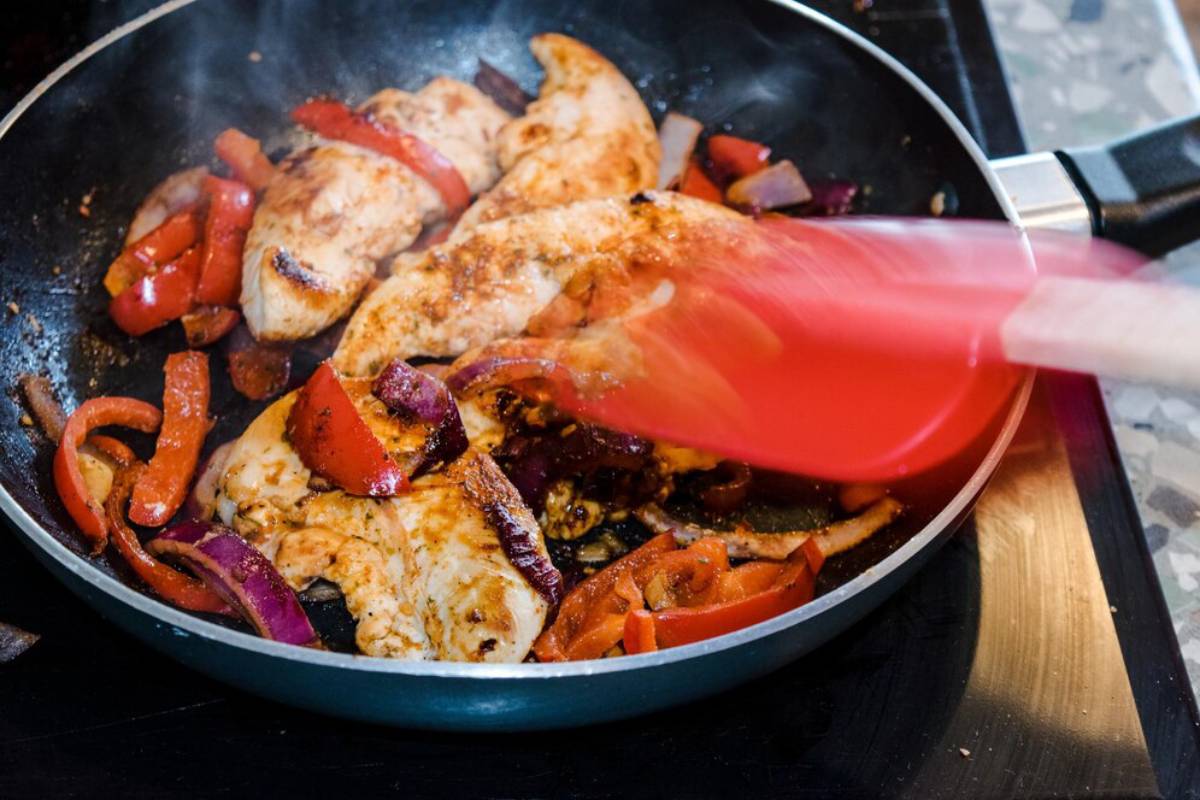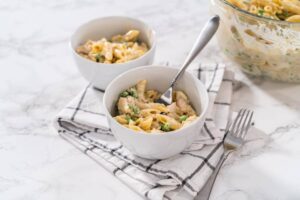The Food & Recipes Blog

Speedy Greek Chicken and Quinoa Bowl
There’s a quiet confidence to meals that don’t clamber for attention, that arrive at the table composed rather than constructed. This Greek chicken and quinoa bowl belongs in that category: unfussy, tightly structured, and deeply satisfying. What it offers—quickly, and with minimal ceremony—is a complete, nuanced dinner that resists the usual binaries of “fast” and “forgettable.”
Here, quinoa serves less as a healthful placeholder and more as an absorptive base—soaking up lemon and oil, anchoring the plate without dominating it. The chicken, simply seasoned, delivers heat and savour; vegetables lend freshness; and feta, salt. Each element finds its purpose not in isolation, but in relation to the rest.
The Utility of Quinoa, When Properly Used
Too often relegated to “grain substitute,” quinoa deserves better. When cooked with intention and seasoned appropriately, it offers a satisfying interplay of texture and flavour: delicate but firm, neutral but responsive.
In a Mediterranean context, it wears lemon and oregano effortlessly, soaking in sharp vinaigrettes and standing up to warm ingredients layered on top. It performs here not because it’s nutritionally complete, but because it holds the dish in quiet equilibrium—catching oil, cushioning heat, counterbalancing salt.
Chicken, Treated Simply but Well
This isn’t chicken that requires hours of marinating or an excess of spice. Thinly sliced, seared quickly, and finished with lemon and herbs, it delivers the structure and warmth that many “bowl” meals lack. It is neither shredded nor disguised—it’s grilled chicken that tastes like grilled chicken: direct, well-seasoned, and texturally grounded.
What matters more than the seasoning, however, is its proportion. This is not a protein-forward plate. The chicken is an element, not the event.
Ingredients (Serves 2)
For the chicken:

- 2 skinless, boneless chicken breasts, thinly sliced or pounded
- 1 tbsp extra virgin olive oil
- 1 tsp dried oregano
- ½ tsp garlic powder or 1 clove fresh garlic, crushed
- Sea salt and black pepper
- Juice of ½ lemon, to finish
For the bowl:
- 1 cup cooked quinoa, warm or room temperature
- A handful of cherry tomatoes, halved
- ½ cucumber, diced finely
- ¼ red onion, shaved thin
- Baby spinach, rocket, or a handful of shredded romaine
- 50g feta, crumbled
- Kalamata olives (optional, but recommended)
- Fresh parsley, mint, or dill
For the dressing:
- 2 tbsp olive oil
- 1 tbsp red wine vinegar or lemon juice
- ½ tsp Dijon mustard
- Sea salt, black pepper
Method
Step 1: Cook the chicken
Heat oil in a wide skillet over medium-high heat. Season the sliced chicken with oregano, garlic, salt, and pepper. Cook for 5–6 minutes until the exterior browns and the interior is fully cooked. Just before removing from the heat, add lemon juice to deglaze the pan and brighten the meat. Set aside to rest.
Step 2: Prepare the dressing
Whisk together oil, vinegar or lemon, mustard, and a pinch of salt. Adjust acid and salt until the dressing has clarity, sharpness without harshness.
Step 3: Assemble the bowl
Layer quinoa in the base of two shallow bowls. Distribute vegetables in small groupings or stripes rather than tossing—this preserves texture and allows each bite to differ. Add chicken slices, crumble feta over top, and scatter herbs.
Step 4: Dress and finish
Drizzle the vinaigrette over everything. Add a few olives, if using, and serve immediately. Eat warm, cool, or at room temperature—this bowl wears all three equally well.
Composition as Intention
This is not a meal built for bulk. It’s composed around restraint and interrelation. The chicken, seasoned with little more than lemon and dried herbs, speaks more through texture and temperature than intensity. The quinoa, lightly dressed, acts not as filler but as context. Vegetables are left raw and clean. Feta appears only once you’ve noticed the salad needs anchoring.
Each element maintains its own integrity—but, more importantly, contributes to the whole.
Notes for a More Considered Plate
- Respect temperature contrast: Let the chicken remain warm, but not searing. The quinoa should be neither cold nor freshly steaming. Room temperature ingredients hold dressings better, and variance in heat sharpens contrast.
- Resist overdressing: Vinaigrette should land in droplets, not pools. The quinoa will absorb what it needs. Let the rest remain visible.
- Herbs aren’t garnish: Parsley, mint, dill—whatever you choose, use it with intention. Not just for colour, but to add the high notes that feta and grain cannot provide.
- Slice, don’t dice: Keeping ingredients—cucumber, onion, tomato—in larger segments creates more defined bites. Dicing blends flavour; slicing separates it.
Common Pitfalls
- Treating the chicken like an afterthought: This is fast cooking, yes—but it’s not lazy cooking. Thin slices, a hot pan, and attention are essential. Don’t crowd the pan. Let the meat sear.
- Undersalting the quinoa: Quinoa is rarely seasoned well enough. Cook it in salted water, and if it’s made in advance, taste and season it before assembly.
- Adding feta too early: Feta is best when added at the last moment. Mixed in early, it loses definition and leeches into the dressing.

Variations for Repetition Without Redundancy
- Vegetarian – Swap the chicken for roasted chickpeas tossed in smoked paprika and cumin. Finish with a dollop of hummus or a drizzle of tahini.
- Hearty – Add cooked lentils or bulgur to the quinoa for added depth and a firmer bite.
- Bright and herb-forward – Use dill and parsley liberally, with added capers or a splash of white wine vinegar in the dressing.
- Spiced – Toss the chicken with za’atar or sumac. Top with a spoonful of yoghurt thinned with lemon and garlic.
Nutritional Snapshot (Approximate, per serving)
- Calories: 460
- Protein: 35g
- Carbohydrates: 32g
- Fat: 21g
- Fibre: 6g
This quinoa dinner offers balance across macronutrients and avoids reliance on processed ingredients or added sugar. With plenty of protein, moderate complex carbohydrates, and plant-derived fats, it holds up as a repeatable, weeknight staple.
Who This Is For
This bowl suits those who cook for a function, but want more than fuel, for people who want clarity of flavour, not layers of distraction. It’s not extravagant, but it is considered—and in a weekday landscape dominated by shortcuts, that distinction matters.
It also accommodates variation without loss. Swap the grain. Change the herbs. Add or remove the cheese. So long as the principles of contrast, freshness, and structure remain, the bowl will hold.
Final Thoughts: Precision Over Complexity
The appeal of this Greek chicken and quinoa bowl is not in its speed, though that helps. It’s in its quiet sense of proportion. Every element earns its place. No one ingredient dominates. The bowl is composed, not assembled—and when your goal is a dinner that respects both your time and your palate, that matters more than novelty ever could.









